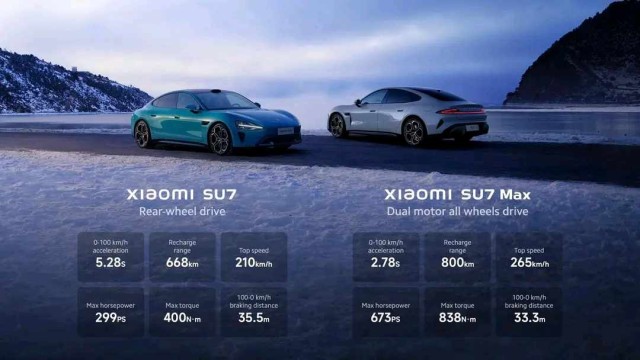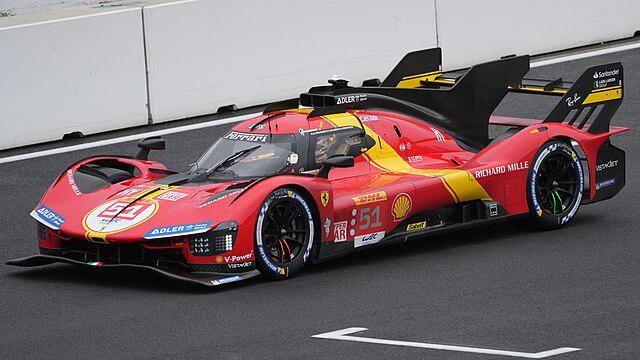Following rumors, Xiaomi recently revealed the SU7 series, the company's first electric vehicles, at an event in China. These are available in two types, the SU7 and the SU7 Max, and they both include Xiaomi HyperEngine V6/V6s motors that run at 21000 rpm. According to the business, the HyperEngine V8s, which is already in mass production, will run at 27200 rpm by 2025. For the future, it is also developing a 35000 rpm motor with a carbon-sleeved rotor.
These are powered by Xiaomi HyperOS, and the interior is available in Obsidian Black, Twilight Red, and Galaxy Gray. It makes use of a 56-inch HUD, a 7.1-inch flip instrument screen, and a 16.1-inch big touch screen. Moreover, keyboard expansion is supported by the central control panel, and system intelligent integration is included. Additionally, it has a classic D-shaped steering wheel and sports seats.
The design team for Xiaomi automobiles is composed of prominent global automakers, including Mercedes-Benz and BMW. The body's proportions have been meticulously designed to achieve a look akin to a sports vehicle.
The Xiaomi SU7 has pebbled frameless water drop rearview mirror, pebble-shaped lidar, 175° ripple curved surface, G4 continuous curvature of the full car contour, and water drop-shaped headlights and 2.48m halo-shaped tail lights. The door handles are semi-hidden.
There are 17 air exits on both the top and bottom, along with 8 sets of air ducts. When driven to its maximum speed, the electric rear wing can generate 130 kg of downforce, giving the automobile the world's lowest drag coefficient (Cd 0.195).
The Xiaomi SU7 cockpit is designed with humans in mind. 5.35 m² of vehicle glass area, an industry-leading canopy, front windscreen and sun protection, and dynamic ambient lighting are all features of the wrap-around cockpit. There are 25 speakers throughout the entire car, including 7.1.4-channel Dolby Atmos and speakers built into the headrests.
The Xiaomi SU7 has a front row with a vertical space of 1012 mm, and those 1.88 meters tall or shorter can still have enough headroom. The front luggage capacity is 105 liters, the largest in the domestic market, while the trunk holds 517 liters. The rear space is larger than that of the Tesla Model S and the BMW 5 Series.
The SUV7 boasts a 400V platform, a 73.6-degree iron lithium battery, a 668km battery life, and a 0 to 100kmph time of 5.28 seconds. It uses a Qualcomm 8295 chip and has a single Orin chip.
The 101Kwh CATL Integrated Battery Technology of the Xiaomi SU7 Max allows the battery pack to be neatly integrated into the body of the car. According to the firm, it maximizes passenger cabin space and strengthens the car overall.
The range of the SU7 Max is up to 800 kilometers. Moreover, it has ultra-fast charging capabilities, enabling 220 km in 5 minutes and 510 km in 15 minutes. With a 101-degree ternary lithium Kirin battery, two Orin chips, lidar, Qualcomm 8295, air suspension + CDC, an electric tail wing, a 56-inch HUD, a 25-speaker sound system, and electric suction doors, this vehicle can reach 100 kmph in 2.78 seconds.
The Xiaomi SU7 boasts the highest vehicle torsional rigidity of 51000 N·m/deg among mass-produced automobiles, an armored steel-aluminum hybrid body with a strength of 2000MPa, and seven airbags.
Verdant Green, Mineral Gray, and Aqua Blue are the available colors for the Xiaomi SU7 series. The company stated that it will launch in China in 2024, but it did not disclose the price or the date of sale at this time.































Comment: